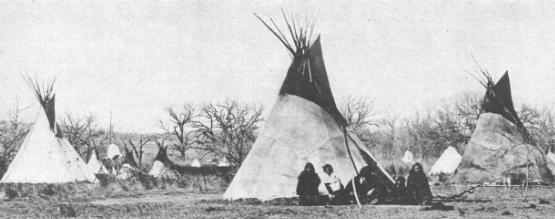| << Chapter < Page | Chapter >> Page > |
In recent years, scholars and educators have worked towards more complex depictions of Native Americans, as opposed to reducing the entirety of Native American history to one long Trail of Tears, culminating in present-day reservation life. These advances in scholarship are now appearing in the classroom via discussions of the persistence of Indian culture and identity. Note: Throughout this module I use the terms “Native Americans” and “Indians” interchangeably, as is the current practice in the historical profession. Texas historians, in particular, have embraced the concept of Indian agency and have sought out sources that support this ‘new’ approach to native history. However, the search for sources remains difficult as most Anglo-American, Spanish, French, and Mexican documents silence more Native American voices than they reveal. U.S government documents provide one window into the fraught relations between these groups. A collection of documents in the ‘Our Americas’ Archive Partnership (a digital collaboration on the hemispheric Americas) and gathered under the title, "Communication from the Commissioner of Indian Affairs," demonstrates how Native Americans in Texas fought for cultural, and actual, survival during the Mexican War period (1846-1848). This module suggests ways to incorporate sections of these official communications into the classroom in order to illuminate the complexity of the Mexican War, the existence of cultural misunderstandings, and the agency of native peoples.
The Texas agency of the Office of Indian Affairs was officially established on March 20, 1847. Robert S. Neighbors was the first special agent for Texas and that is why many of the official communications are to/from him. Neighbors’s responsibilities included maintaining communications with the Indians in the state, providing gifts to the Indians in order to facilitate trade, and evaluating the strengths/weaknesses of various Indian groups. But, he had to be careful not to appear too powerful as Texas prior to 1848 was an area of “undefined relative jurisdiction,” not yet belonging to the United States (March 19, 1847, letter). With the backdrop of the Mexican War, Neighbors, as revealed in these communications, waged a cultural war against Indians in Texas. Therefore, the documents would be best discussed within a lesson on the Mexican War, Manifest Destiny, and expansionism. For a quick, visual synopsis of the Mexican War see the PBS video special “U.S.-Mexican War, 1846-1848” . Or, students could be assigned Bruce Winder’s Crisis in the Southwest (2002) (see full biographical details below), a concise, accurate overview of the war period. The module, “Using Original Documents on the Mexican American War,” might also prove useful.
Comanche camp


Notification Switch
Would you like to follow the 'Revolution and war in the hemisphere' conversation and receive update notifications?